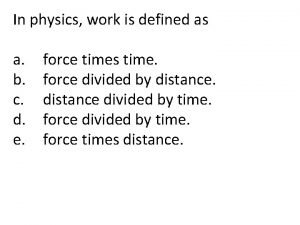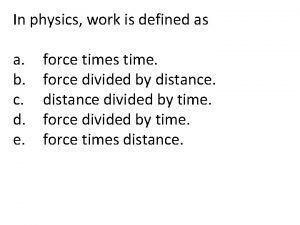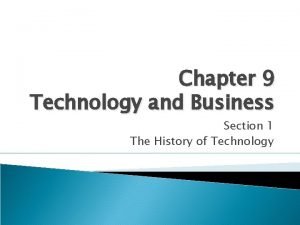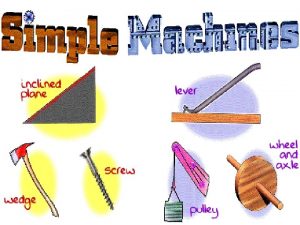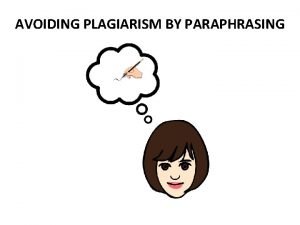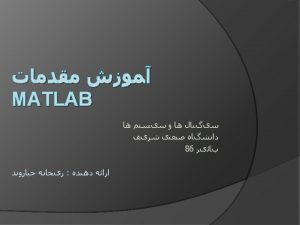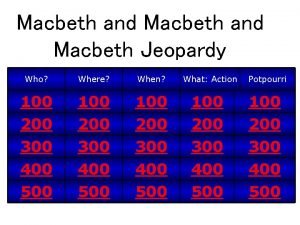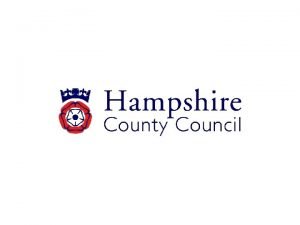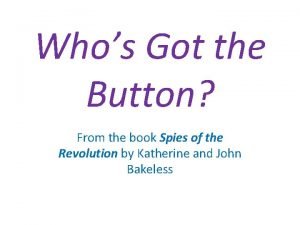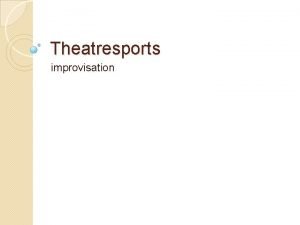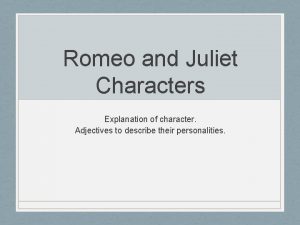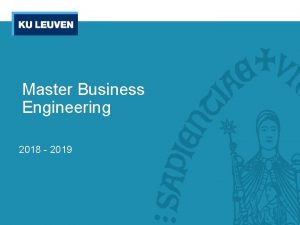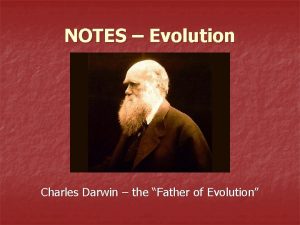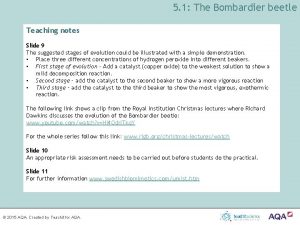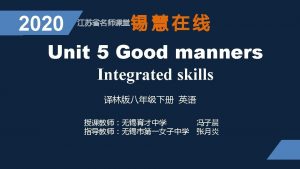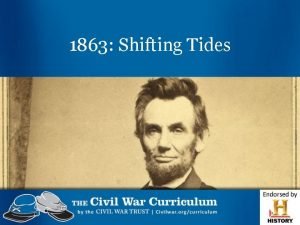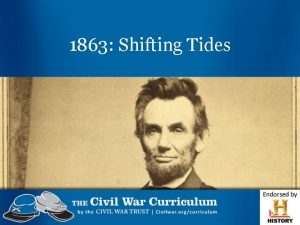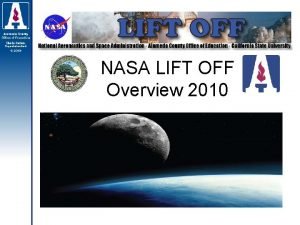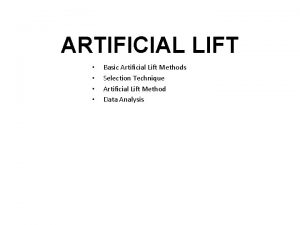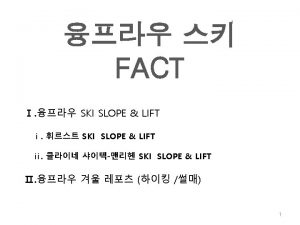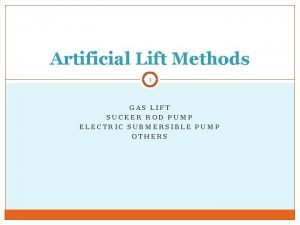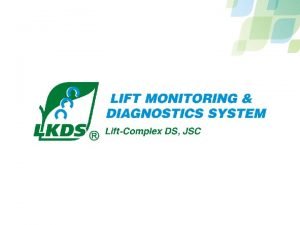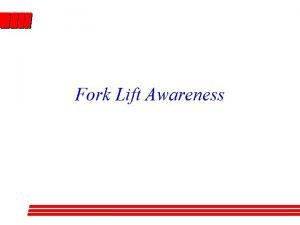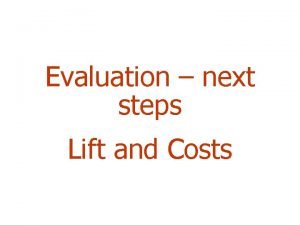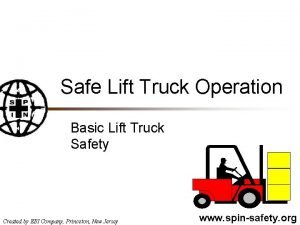Whos Doing the Work Shifting the Lift in















































- Slides: 47

Who’s Doing the Work - Shifting the Lift in Math Core Advocates Monthly Webinar September 6, 2017 The webinar will begin shortly. You may wish to download the handouts (check the tab on your webinar control panel) while you wait.

Introductions Your hosts from the Field Impact Team • Sandra Alberti, Director • Janelle Fann, Project Manager • Jennie Beltramini, Teacher Engagement Manager • Joanie Funderburk, Manager of Professional Learning This Month’s Guests • Marni Greenstein, SAP Mathematics Specialist • Melissa Higgins, Colorado Core Advocate • Jaimee Massie, Oregon Core Advocate 2

Who are Core Advocates? • Core Advocates are educators who: – – – Believe in the potential of the CCSS to prepare all students for college and careers; Are eager to support their colleagues and communities in understanding and advocating for the CCSS and CCSS-aligned instruction; Understand embrace the shifts in instruction and assessment required by the CCSS 3

To learn more about Core Advocates… • Contact Jennie Beltramini (jbeltramini@studentsachieve. net ) or Joanie Funderburk (jfunderburk@studentsachieve. net) • Complete this survey to join our database (and mailing lists): https: //achievethecore. org/ca-signup • Visit our website: www. achievethecore. org 4

Tweet with us • Please feel free to tweet during and after the webinar using #coreadvocates • • @achievethecore @Joanie. Fun, @salberti, @Jennie. Beltro @math_marni @jaimeemassie 5

Webinar protocols During the webinar – Accessing Documents – Questions option – Polling After the webinar – Survey – Access to recorded webinar 6

Instructional Advocacy – A Definition Grounded in a firm understanding of the Shifts, educators owning, supporting, and promoting the resources, tools, and practices that create learning environments in which students develop college- and career- readiness. 7

Tell us about your efforts www. achievethecore. org/educators-taking-action 8

Goals of the webinar ✓Learn how the Instructional Practice Guide identifies the components of a math classroom where students are engaged with and learning mathematics ✓Recognize what it looks like when students are holding the majority of the cognitive lift in a math class ✓Consider adjustments to instruction that shift the cognitive lift back to students 9

How does the Instructional Practice Guide (IPG) help teachers understand create a classroom where students are actively engaged in meaningful mathematics?

The Instructional Practice Guide: Coaching 11

Core Actions in the IPG Core Action 1: Ensure the work of the lesson reflects the Shifts required by the CCSS for Mathematics. Core Action 2: Employ instructional practices that allow all students to learn the content of the lesson. Core Action 3: Provide all students with opportunities to exhibit mathematical practices while engaging with the content of the lesson. 12

Standards for Mathematical Practice • Core Action 3: Provide all students with opportunities to exhibit mathematical practices whil engaging with the content o the lesson 13

Core Action 3: Provide all students with opportunities to exhibit the math practices while engaging with the content of the lesson. Indicator A: The teacher poses high-quality questions and problems that prompt student to share their developing thinking about the content of the lesson. Students share their developing thinking about the content of the lesson. 14

Poll: Which indicator(s) in Core Action 3 lead to students “doing the work” in a math classroom?

Evidence for Core Action 3 Indicators 16 16

Evidence for Core Action 3 Indicators 17 17

Evidence for Core Action 3 Indicators Kaleb: I noticed that in each row of the metric table the number on the left is ten times as much as the on the right, that’s like our base ten system. It’s 10 times more each time we shift a place left. 18 18

What does it look like when students are holding the majority of the cognitive lift in math class?

Student engagement “The culture of American schools, in its deep structure, is very teacher-centric. We tend to focus more on what the teacher is doing in front of the classroom than we do on the work that is actually on top of the student’s desk. ” Richard Elmore, “Improving the Instructional Core” 20

Application ersta eptua l Und Conc ency l & Flu il ural Sk Proced nding Shifting the Lift for Math Worth Doing 21

Talk Time “When I was in front of the class demonstrating and explaining, I was learning a great deal, but many of my students were not! Eventually, I concluded that if my students were to ever really learn mathematics, they would have to do the explaining, and I, the listening. ” Steven C. Reinhart, “Never Say Anything a Kid Can Say!” 22

Responding to Struggle “A focus on student struggle is a necessary component of teaching that supports students’ learning of mathematics with understanding. Teaching that embraces and uses productive struggle, leads to long-term benefits with students more able to apply their learning to new problem situations. ” NCTM’s Principles to Actions; p. 48 23

Question: As you reflect on a recent learning experience, what means of engagement best supported your learning? Please use your Questions tab to respond.

Data Collection: Instructional Practice Guide Core Action 3 25

Data Collection - Who’s Doing the Work? Teacher Talk Time Teacher Talk % Student Talk Time Student Talk % Teacher Questions/Responses Student Questions/Responses 26

What instructional practices can be used or adapted to shift the cognitive lift to students?

Question: What obstacles do teachers face in shifting the lift in math to students? Please use your Questions tab to respond.

Common obstacles • Teachers feel pressed for time - it’s faster and easier to use direct instruction to cover content. • Teachers and students are uncomfortable with struggle. • Teachers and students want the satisfaction of students being able to obtain right answers to math problems. • Teachers and students have beliefs about students’ abilities to understand and/or engage with math (all students or certain subgroups). • Teachers and students think math instruction is being told the rules or procedures and engaging in rote practice. • Teachers are uncomfortable with student activity that isn’t carefully controlled. 29

Adjustments that shift the cognitive lift to students 30

Obstacle: Teachers feel pressed for time - it’s faster and easier to use direct instruction to cover content. Strategy Tools/Resources Use FOCUS to ensure that major content is allowed more time and attention. Focus by grade level documents Use COHERENCE to ensure that mathematical connections are made explicit. Tie new concepts to those previously learned. Select high-quality tasks that help students understand the math and its connections to other concepts. Coherence Map Tasks on Achieve the Core and Illustrative Mathematics 31

Obstacle: Teachers and students think math instruction is being told the rules or procedures and engaging in rote practice. Strategy Tools/Resources Provide structures (such as collaborative groups, think-pair-share, shoulder partner talk, etc. ) to provide safe ways for students to share their developing mathematical thinking. Creating Math Talk Communities Number Talks Never Say Anything a Kid Can Say! article Intentionally sequence sharing of student work to show the development of a mathematical idea. 5 Practices for Orchestrating Productive Mathematics Discussions Utilize incomplete and/or partially correct student work to honor and celebrate mistakes as learning opportunities Mistakes Grow Your Brain Provide feedback and create the expectation that students revise their work. Rough Draft Talk in Mathematical Mindsets 32

Special Guest Core Advocate: Melissa Higgins 7 th Grade Math Teacher Murphy Creek P-8, Aurora, CO

Belief that ALL students can access the learning • Teacher’s actions demonstrate belief that “ALL” students can • Teachers identify students’ strengths and use those to set next steps • Teachers use content that supports students’ strengths 34

Leading by Example: Risk taking by letting go of control of the learning • Teachers have to model risk taking to support students taking risks • Teachers have to allow students to own the learning in order to encourage risk taking • Teachers have to be comfortable with the unknown 35

Balancing time needed to understand still cover the content • Moving slower to allow for conceptual understanding leads to speed with procedural skill and fluency • Quality versus Quantity • Depth of Knowledge vs. covering year at a glance/pacing guide 36

Special Guest Core Advocate: Jaimee Massie Elementary Math TOSA Eugene 4 J SD, Eugene, Oregon

Safe Risk-taking to Build an Intentional Math Community • Form relationships • Play games • Set up routines Acing Maths 38

Anticipating & Collecting Student Strategies • • • Worthwhile task Do the math Sequencing system Collect new strategies Confer with colleagues Save for later! 39

Maybe it’s not the math, maybe it’s access • reading to the whole class or student • asking clarifying questions before launching to group or independent work • building prior knowledge around concept, context or vocabulary • get out the tools • planning to elicit thinking from a variety of learning styles – whiteboards – use think-pair-share – gallery walks – sentence stems to response • share mid-way not only at the end 40

Questions for webinar guests?

Set a goal: As you reflect on the indicators of Core Action 3 of the IPG, set an intention around improving one or more in your own classroom. What evidence could you collect to measure your progress? What evidence could you collect to determine the impact on student learning?

Resources Principles for the Design of Mathematics Curricula: Promoting Language and Content Development Rachel Lambert – MATHEMATIZING 4 ALL Collection of math and disability resources

Instructional Advocacy – A Definition Grounded in a firm understanding of the Shifts, educators owning, supporting, and promoting the resources, tools, and practices that create learning environments in which students develop college- and career- readiness. 44

Tell us about your successes http: //tinyurl. com/educatorstakingaction 45

Please join us again next month! • Next month’s topic: Who’s Doing the Work: Shifting the Lift in ELA/Literacy Wednesday, October 4, 2017 7: 00 - 8: 00 pm Eastern • Register Here: https: //attendee. gotowebinar. com/register/735337362110595 3539 46

Thank You!
 Doing nothing is doing ill
Doing nothing is doing ill Anything worth doing is not necessarily worth doing well
Anything worth doing is not necessarily worth doing well In physics, work is defined as
In physics, work is defined as In physics, work is defined as *
In physics, work is defined as * How much work is required to lift a 360 kilogram piano
How much work is required to lift a 360 kilogram piano What is the difference between e-workforce and e-commerce?
What is the difference between e-workforce and e-commerce? A device that makes doing work easier
A device that makes doing work easier Doing honest work in college
Doing honest work in college Someone doing work
Someone doing work How to clear matlab command window
How to clear matlab command window Site:slidetodoc.com
Site:slidetodoc.com Jeopardy macbeth
Jeopardy macbeth Who wants
Who wants Whos adam smith
Whos adam smith Quiz od
Quiz od Whos macduff in macbeth
Whos macduff in macbeth Pleisomorphy
Pleisomorphy Resolution of the lottery
Resolution of the lottery Marie curie was born maria sklodowski
Marie curie was born maria sklodowski The story of achilles heel
The story of achilles heel Whos entitled to 30 hours free childcare
Whos entitled to 30 hours free childcare Whos who ideas
Whos who ideas Lydia darragh
Lydia darragh Finding nemo journey map
Finding nemo journey map Activity 1 whos who
Activity 1 whos who Whose child is this
Whose child is this Is macbeth thane of glamis
Is macbeth thane of glamis Whos line is it anyway
Whos line is it anyway Whos telling the story
Whos telling the story Adjectives to describe mollie in animal farm
Adjectives to describe mollie in animal farm Hamlet characters
Hamlet characters Adjectives to describe romeo and juliet characters
Adjectives to describe romeo and juliet characters Whos darwin
Whos darwin Where has macduff gone?
Where has macduff gone? Whos this
Whos this Whos taylor swift anyway
Whos taylor swift anyway Whos the thane of fife
Whos the thane of fife Whos a famous painter
Whos a famous painter Whos sitting bull
Whos sitting bull Mapp public health
Mapp public health Ku leuven whos who
Ku leuven whos who Whos job is it
Whos job is it Whos job is it
Whos job is it Whos the father of evolution
Whos the father of evolution Whos boxer in animal farm
Whos boxer in animal farm What are banquo's concerns about the witches prophecy
What are banquo's concerns about the witches prophecy Bombardier beetle darwin
Bombardier beetle darwin Whos for the game jessie pope
Whos for the game jessie pope


